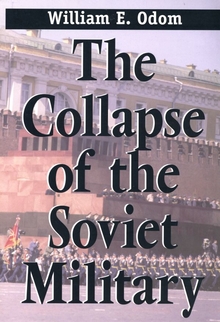The Holy Place
WARNING
You are viewing an older version of the Yalebooks website. Please visit out new website with more updated information and a better user experience: https://www.yalebooks.com
Architecture, Ideology, and History in Russia
Konstantin Akinsha and Grigorij Kozlov, with Sylvia Hochfield
The history of a building site in Moscow where Russian rulers since Alexander I have planned, constructed, and destroyed monuments of colossal proportions
This book surveys two centuries of Russian history through a succession of ambitious architectural projects designed for a single construction site in central Moscow. Czars, Bolshevik rulers, and contemporary Russian leaders alike have dreamed of glorious monuments to themselves and their ideologies on this site. The history of their efforts reflects the story of the nation itself and its repeated attempts to construct or reconstruct its identity and to repudiate or resuscitate emblems of the past.
In the nineteenth century Czar Alexander I began to construct the largest cathedral (and the largest building) in the world at the time. His successor, Nicholas I, changed both the site and the project. Completed by Alexander III, the cathedral was demolished by Stalin in the 1930s to make way for the tallest building in the world, the Palace of Soviets, but that project was ended by the war. During the Khrushchev years the excavation pit was transformed into an outdoor heated swimming pool—the world’s largest, of course—and under Yeltsin’s direction the pool was replaced with a reconstruction of the destroyed cathedral. The book explores each project intended for this ideologically-charged site and documents with 60 illustrations the grand projects that were built as well as those that were only dreamed.
"The authors present, for the first time, the extraordinary story of construction, destruction, and then reconstruction of the central Moscow cathedral, the Cathedral of Christ the Savior, effectively exploring the relationship between power and art in Russia and the Soviet Union. Full of vivid images and daring comparisons, they provide a valuable perspective on Russia today and in-depth insight that even the most serious analytical reports on Russia’s political, social, and cultural development under Putin do not offer." —Vlad Zubok, Temple University
"The authors present, for the first time, the extraordinary story of construction, destruction, and then reconstruction of the central Moscow cathedral, effectively exploring the relationship between power and art in Russia and the Soviet Union." —Vlad Zubok, Temple University
“… a learned, multi-faceted and incisive account that throws light on numerous questions while it raises many others … Holy Place is significant … it is well researched and tells its story engagingly … richly illustrated, with materials drawn from archives, libraries and private collections … dramatically narrated, this is a work that will be of much interest to students of art, history, politics and religion, as well as to travellers looking for a first-rate guide to one of Moscow’s most important landmarks.” - Wallace L. Daniel, Ecclesiastical History, Vol. 60
Publication Date: October 27, 2007
60 color illus.








